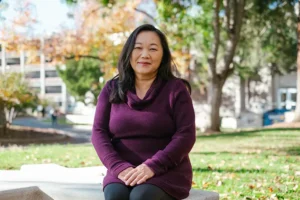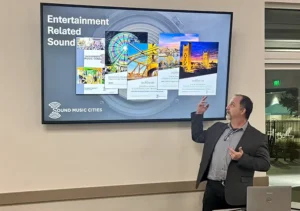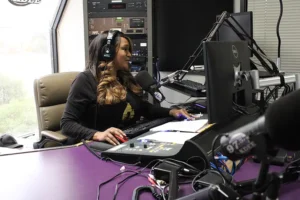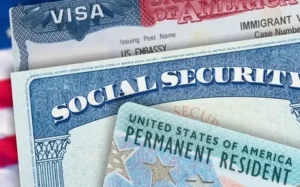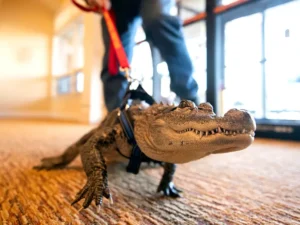
The school system in the U.S. is a little different from other countries. And sometimes new immigrants can be confused with it. But upon closer inspection, it is almost the same, only with a different focus
Deep Dhillon, principal of Gateway International School, says it can be difficult for new immigrants to figure out about the U.S. school system. She recommends starting with teachers and asking them about procedures, routines and what is expected of students in the classroom and at home.
According to Dhillon, there is more emphasis in the USA on ELA (English Language Arts), social studies and reading, while some other countries focus more on math and science. However, there is currently a shift towards enrichment classes or elective courses (such as art and music) during the day or in the afterschool program. Enrichment classes are extracurricular programs outside the classrooms where students can get extra help with their academics, homework and activities of their interest.
Not all schools offer second language classes. There is no traditional English class with grammar, vocabulary and literature. However, there are two options: ELA classes for those students who have English as their second language, and Intervention program for American students who need additional support. These classes are from a pullout system when students go to other classrooms, or from a push-in system when teachers come to the regular classrooms and help students during their main program.
Different types of schools
Schools in the USA are divided into public, charter and private. Charter and public schools are free, but for a private school tuition can range from $10,00 to $25,000 per year.
The rules and regulations for charter and public schools are almost the same and are controlled by the school district. Teachers must be certified, curriculum approved by the district, and each school’s plan must be submitted annually.
According to Dhillon, charter schools must show progress in order to stay open, and they go through a charter renewal process every five years.
Since private schools are privately funded, they have much more freedom and flexibility in making choices at the school level and by the parents.
For those who still don’t understand the difference between a public and a charter school, in order to get into a public school, the family should live close to it. With charter schools, it is possible to attend any school as long as you can get into that school. Most of them have waitlists and a lottery system.
Dhillon thinks that if your public school has a good rating, then this might be a good option. She says charter and public schools are almost the same. But most families first find out about the rating of schools in the area before moving there.
“When you are either purchasing your house or renting, look at the school to see their rating, how they are doing, how they are performing and things like that,” Dhillon recommends.
Dhillon says there is no bigger chance of getting into universities after private schools. It depends more on student grades, extracurricular activities and how much work they put into it.
School system in the USA
In the USA, there is no official first day of school like Sept. 1st. The typical U.S. school year is 180 days long, but school districts choose their first and last day of school. Some schools still have quarters, some schools choose to have trimesters or semesters.
The school year ends in May/June. Children in the USA usually only have two months of summer break.
Students have 12 years of schooling plus Kindergarten and TK (transitional kindergarten). Kindergarten and TK are not required.
“In America, almost every family is a working-class family,” Dhillon says.
“So, parents are looking for childcare for their children, which is one of the most expensive things in America.”
This is just an opportunity for parents to get free daycare, and for children to learn academics and skills needed for the first grade.
“America is one of the countries that is underperforming when it comes to education. The vision is that the earlier you begin, the more you are able to get them with the foundation skills setup,” Dhillon says.
Every year students have different teachers and different classmates. In America, people believe that this is an opportunity to socialize and connect with everyone.
“And it is an opportunity to also have a fresh start,” Dhillon says.
At the end of the year, teachers give feedback to the school administration on how students communicate with each other and what area of concern is. The administration forms classes for the next school year.
And because of immigration and the tendency to move from place to place, there are always a lot of enrolling and dropping students.
Most schools do not have school uniforms. But this is decided at the district level for public schools and at the school level for private schools.
There is no single national curriculum or standards for every school. The curriculums are selected at the district level. But there are still not many options – schools have only a handful of state-approved curriculums to choose from.
“There is lots of piloting that happens at the school level, input from staff, parents and students, before schools adopt a curriculum,” Dhillon says.
In high school, students can choose their own elective classes, unlike some other countries where they already have a schedule. But still they have a limited list of elective courses in order to get the degree.
Some students may feel lost or overwhelmed if they start school late in the USA. And families sometimes cannot help because they are also new to the system. But Dhillon says immigrant children tend to do better and attend colleges and universities more often.
“They are more driven because the focus is being pushed from families as well as you need to make something out of yourself. That opportunity, which I didn’t have, you need to have for yourself,” Dhillon says.
In America, students learn from elementary school that there are many rules. Students are either always supervised or they know that even if the teacher leaves the classroom, they should stay seated and wait for the next teacher to come.
“In America, you just don’t leave students by themselves, don’t leave them unattended,” Dhillon says.
Some schools have after-school programs. It depends on the district. And the parents should do their homework to find this information on the Internet and on the school website or in the school office.
Some schools offer free lunches based on family income. And parents should provide their children with snacks and water. If parents want to know what is included in the school lunch, the menu is usually posted monthly on the school website.
Parents are not allowed to walk their children to classrooms unless their children are in TK or kindergarten. For everyone else, the only way is to drop-off and to pick-up.
“It’s also finding that balance of disconnecting. We see that the sooner you leave, the faster they start adjusting to knowing that they are going to be left alone,” Dhillon says.
Where to find information before the start of the school year
Before the school year starts, all information about the start of the school and the upcoming year is usually posted on the parent portal on the school website about a week before the first day of school. And teachers usually communicate via email or text messages.
“Communication is the biggest key. That communication between the teacher and parents is really important,” Dhillon says.
Dhillon says many schools do orientations, open houses or back to school fairs where parents can get all the information and help with filling out some forms and paperwork, meet with school staff and even get school supplies.
“I think every school in America either does an open house before school starts or within a couple of weeks after school has started,” Dhillon says.
This is a way to meet your children’s teacher in person, ask them any questions, and get to know the entire curriculum.
The supply list needed for classrooms is most often posted on the school website at the beginning of summer. But some schools provide it during orientation.
The schools provide a lot of supplies. But still, each student should have their own things, such as pencils, crayons, colored pencils, glue sticks and others.
“For some families, it is a tradition to go together to make all of the purchases,” Dhillon says.
Children are excited to have new supplies and feel the approach of the school year.
Many stores have school supplies. Walmart even created lists of schools and supplies lists for each one. However, Target has the lowest prices on all things and different brands.
Dhillon says that families should always start with the school. Schools have all the information and can connect parents to resources. Dhillon also recommends attending school events and workshops.
“And if the schools have volunteering as an option, absolutely fill out the paperwork,” Dhillon says.
This is a great chance to see how your child interacts with their peers, their progress or difficulties as well as their connection with the teacher. And Dhillon says teachers love having volunteers in their classrooms as an extra help.
“In America, you have to be on top of your game,” Dhillon says of the U.S. education system.
“Basically in order to stay focused and keep up to date with attending school, especially college.”


